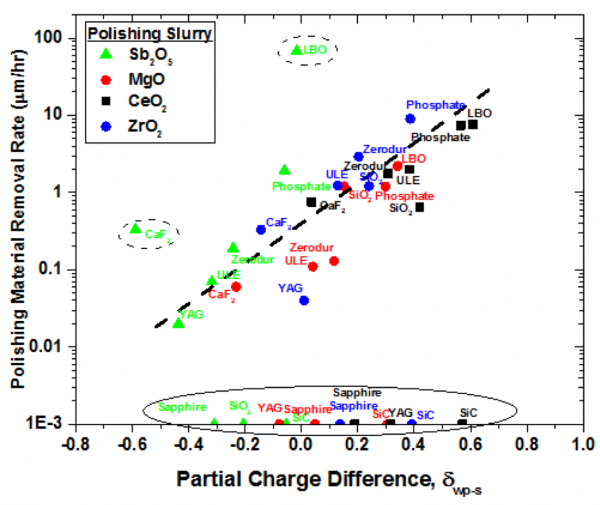Tayyab Suratwala (17-ERD-005)
Executive Summary
The goals of this project are to develop a scientific understanding of the finishing and surface-processing behavior of selected laser optical materials, and optimize grinding-and-polishing processes for each of these materials for use as laser optics. Our research could enable the fabrication of such optical materials for use in high-energy and high-power laser systems with greater optical performance and lifetime at a lower per-unit cost.
Project Description
During the grinding and polishing processes of optics fabrication, complex mechanical and chemical interactions between the workpiece, lap machining process, and polishing slurry have historically led to this field being largely an art rather than a science. The surface quality of optical materials often limits laser performance. Advanced high-power laser systems that support a variety of Lawrence Livermore National Laboratory's research and development require the use of optical components made from a variety of materials. In many cases, the surface quality of optical components, which is determined by how the surface is processed and treated, can limit their future performance and their survivability. In addition, some optical materials, although inherently attractive for use as optical components, are not considered for use because of the current inability to fabricate such materials to the required specifications. Hence, there is a need to understand and develop improved optical-finishing processes for such materials used in high-energy, high-peak, and high-repetition-rate laser systems. Our work centers on gaining a scientific understanding of the finishing and surface processing behavior of selected laser optical materials, as well as developing optimized grinding and polishing processes for each of these materials for use as laser optics. We intend to evaluate and determine the key parameters and phenomena related to grinding and polishing of each of these materials starting from existing experimental techniques and models, and then extending them to the new behavior and phenomena observed.
To gain this scientific understanding of the finishing and surface-processing behavior of selected laser optical materials, we will focus on subsurface damage management, surface figure control, and roughness and removal-rate control. Materials of interest are: calcium fluoride, sapphire, silicon carbide, yttrium aluminum garnet, lithium triborate, a glass ceramic trademarked as Zerodur®, and copper. This material set represents a large breadth of material properties that will be of great interest for advancing finishing science in general. We intend to develop optimized grinding-and-polishing processes for each of these materials by (1) examining grinding subsurface damage and etching, (2) determining key polishing parameters for the polishing pad and workpiece, and (3) evaluating the polishing material removal rate and roughness. The aggregate of our planned evaluations and finishing models on these materials has not yet been measured or developed. The results of our research will lead to an improved understanding of fabrication processes for our seven selected optical materials, and could potentially lead to improved fabrication processes for these materials and development of a global strategy and toolbox for the rapid development of finishing processes for a wide variety of optical materials. Our research would also enable the fabrication of such materials for use in high-energy and high-power laser systems with greater optical performance (such as improved wave front, reduced surface scatter, and greater optics lifetime), primarily through improved resistance to laser damage and lower unit cost.
Mission Relevance
This research supports the NNSA goal of strengthening our science, technology, and engineering knowledge base by exploring advanced laser systems (such as the high-repetition-rate advanced petawatt laser system) to further sustain and advance missions in stockpile stewardship, laser-based directed energy and defense-related optical technologies, and advanced photonic technologies. The surface quality of optical components is a limiting factor for these advanced lasers. Therefore, greater understanding of optical fabrication and finishing technology that we develop during our research would enable the fabrication of improved laser optics, as well as broaden our understanding of future needs of the Laboratory's laser and optical science and technology core competencies.
FY17 Accomplishments and Results
In FY17, we (1) measured the Vickers indentation parameters (a hardness test) of different optical-polishing materials, including calcium fluoride (CaF2), sapphire, silicon carbide (SiC), yttrium aluminum garnet (YAG), lithium tribunate (LBO), ultralow expansion glass (UEG), Zerodur®, copper, and fused silica, which led to lateral and radial crack-propagation constants; (2) performed baseline grinding experiments on all of the above materials; (3) related measured and literature material constants (specifically, lateral crack growth or "lapping hardness") quantitatively to the measured grinding rate; (4) performed preliminary polishing experiments using colloidal silica and ceria, and developed an initial framework for an expanded chemical and mechanical model to predict polishing rates based on surface charge; and (5) performed initial removal-function measurements using the nanometer-scale scratching method and developed an automated code for its analysis.
   






